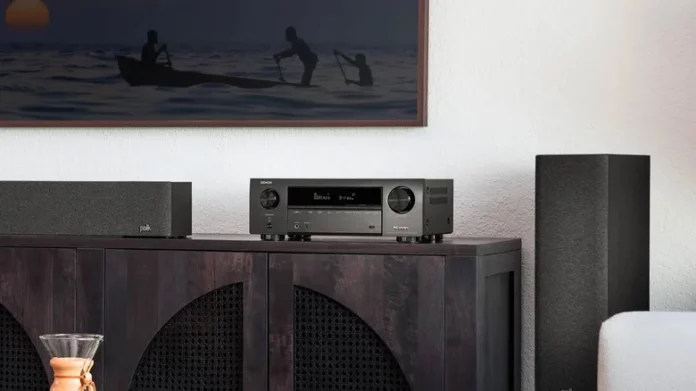Few things ruin the sleek look of a modern TV faster than a tangle of cables spilling out from behind it. Cord covers and in-wall power kits can help tidy things up, but there’s a more elegant — and more powerful — solution: an AV receiver. Part switcher, part amplifier, these devices have been the backbone of home theater systems since the 1980s. And with brands like Denon, Marantz, and Onkyo constantly refining their technology, there’s never been a better time to bring one home.
The Heart of Your Home Theater
An AV receiver acts as the command center for your entire setup, managing both audio and video processing internally. Instead of plugging multiple devices directly into your television, you connect them all to the receiver — your consoles, Blu-ray player, and streaming box — then run a single HDMI cable from the receiver’s output to your TV’s HDMI ARC port. This not only declutters your setup but also enables audio return, meaning your TV’s built-in apps can play sound through your receiver without another cable.
One Receiver to Rule Them All: Denon AVR-X1700H
AV receivers vary widely in price and complexity, from budget models to elite systems costing thousands. For most users, though, the Denon AVR-X1700H 7.2 Channel Receiver hits a sweet spot. At around $600, it delivers serious performance without overwhelming your budget or living room.
The X1700H supports 8K video passthrough, HDMI 2.1, and eARC, along with cutting-edge visual technologies like Dynamic HDR and Quick Media Switching for smooth transitions. It also handles all major HDR formats to keep colors lifelike and contrast sharp, whether you’re watching a 4K Blu‑ray or streaming your favorite series.
On the sound side, 80 watts per channel and 7.2 speaker support give you room to grow — from a simple stereo or 5.1 setup to a full Dolby Atmos or DTS:X system. Denon’s Audyssey room calibration tech fine-tunes each speaker to your space, optimizing performance based on furniture placement and listening position.
Smarter Streaming and Connectivity
The X1700H includes built-in Wi‑Fi and Bluetooth, making it easy to stream music directly from your phone or tablet. With the Denon HEOS app, you can tap into services like Spotify, TIDAL, and Deezer. While the receiver doesn’t require an internet connection, connecting online enables firmware updates to keep it compatible with new formats, consoles, and streaming platforms.
Fewer Wires, More Flexibility
Even with a receiver, you’ll still need one HDMI cable to connect it to your TV — but that’s a huge improvement over the usual jungle of wires. If your TV lacks an HDMI ARC port, you can still send audio back to the receiver using a digital optical cable, which supports up to 6.1 surround sound. And since two cables are far easier to conceal than five, even a slim cord cover can make your setup look professionally installed.
Keep in mind that HDMI cable length affects performance; between 25 and 50 feet usually strikes the right balance between reach and signal quality. If your receiver sits in another room or closet, a Cat6 HDMI extender kit can help bridge the distance without noticeable loss.
A Slim Alternative
If the Denon X1700H’s full-sized frame feels bulky, the Marantz NR1510 Slimline 5.2 Channel Receiver offers a more compact option. It sacrifices support for height channels but keeps powerful sound and reliable connectivity — perfect for smaller setups where space is at a premium.





